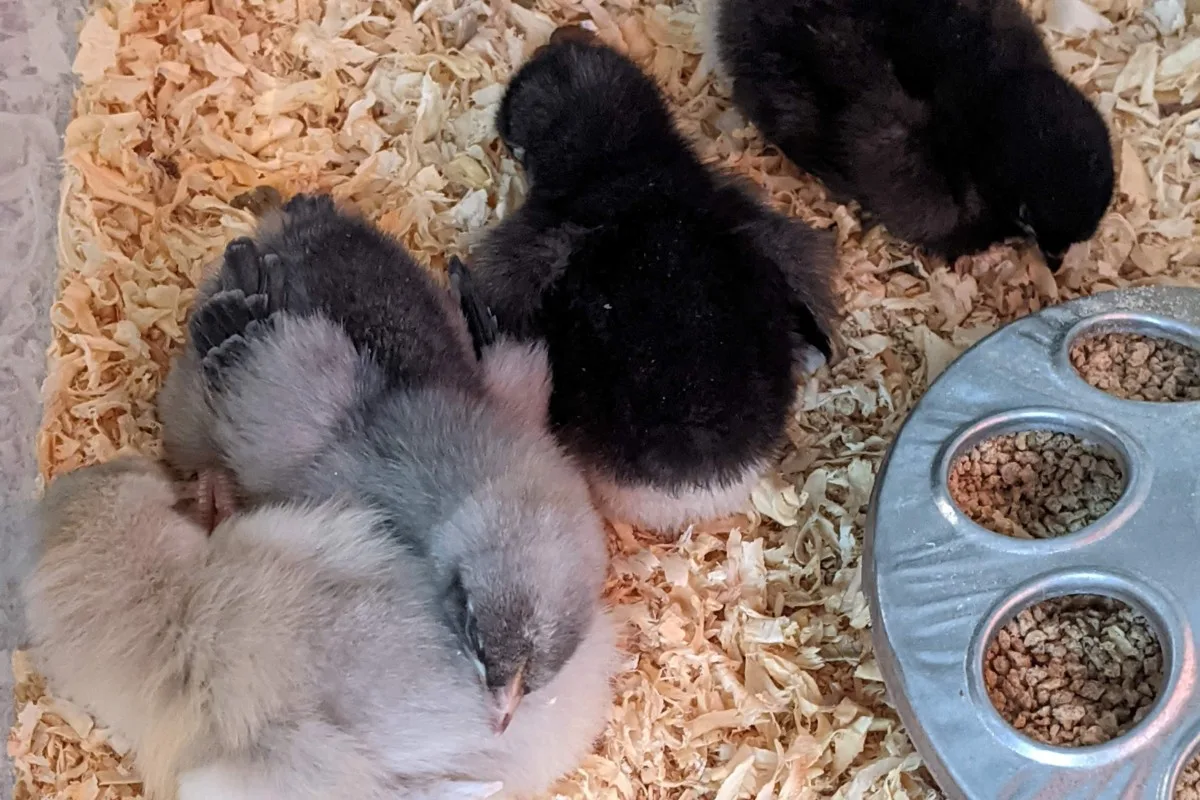
There’s nothing quite like bringing home tiny, peeping balls of fuzz and watching them grow. But the brooder has been packed away for months now. And those fluffy butts strutting around your lawn have long since lost their awkward teenage feathering. Yet, every time you peek in the nest boxes – nothing. Surely, you should be collecting eggs by now.
Here are six signs to look for that mean your chickens will start laying soon.
1. How Old Are Your Pullets?
Knowing the age of your pullet (an immature, non-laying female chicken) can help narrow the window in which you’re likely to expect eggs. This is easy enough to determine if you purchased day-old chicks from a hatchery. Most chickens start laying eggs between 18-22 weeks, around four to six months old.
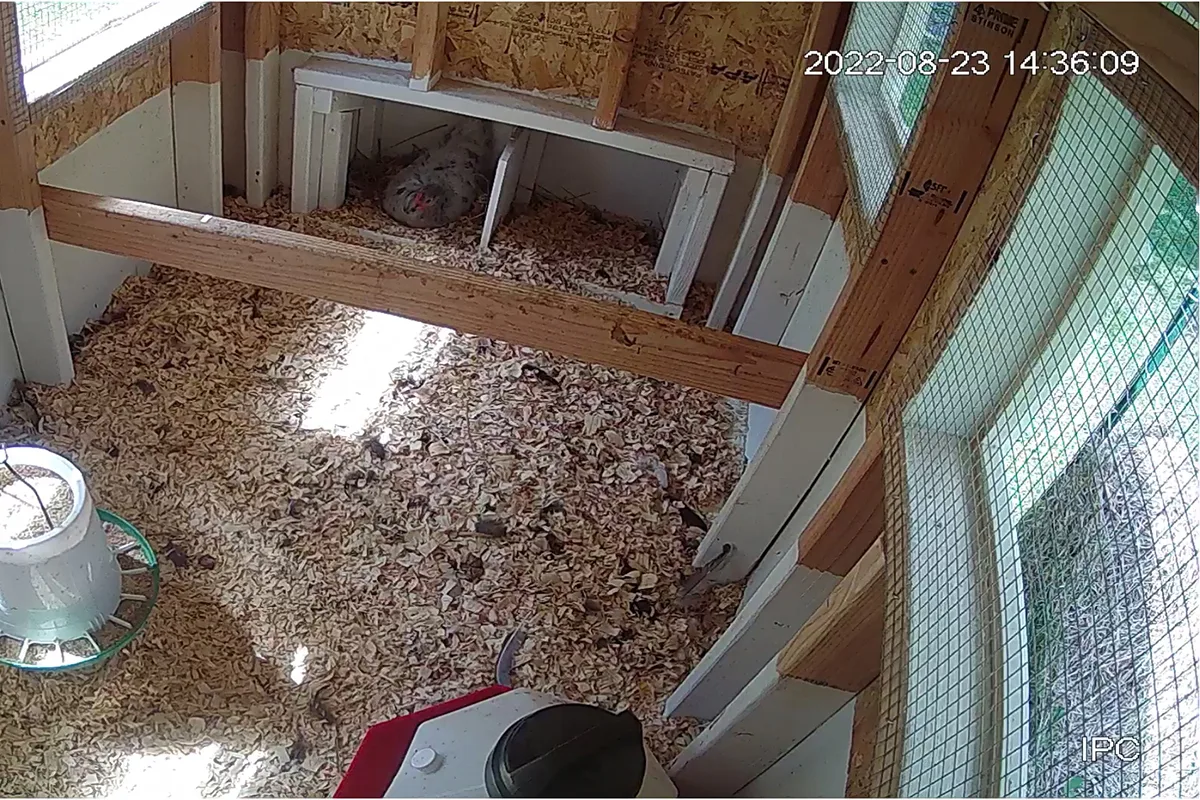
Of course, this number varies quite from one breed to another. If you want a better idea of when your can expect to start seeing eggs, it’s best to use their breed as the point of reference. Australorps, Rhode Island Reds and Leghorns are all breeds that start laying quite early, while other breeds like Brahmas and Orpingtons can take up to six months (24 weeks) to start laying.
And Silkies are a whole other story, taking nearly nine months before they begin laying.
2. Comb, Wattle and Vent
While your pullets are young, their combs and wattles will remain a pale pink. As the chicken matures, the comb and wattle will grow in size and thickness. A mature chicken, ready to lay, will have a bright, healthy red comb and wattle as it flushes with the hormones coursing through your bird’s body.
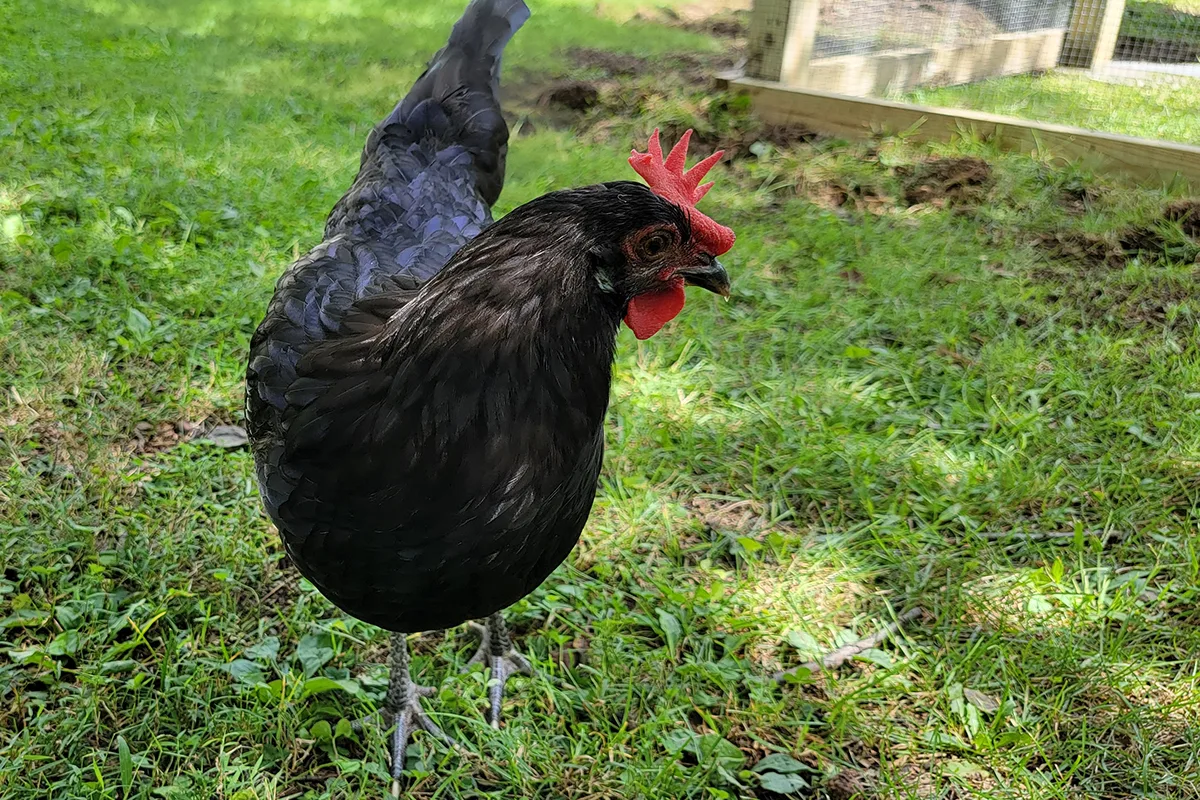
This doesn’t usually happen until a couple of weeks before the hen starts laying. So, if you notice a bright red comb on a chick that you know is too young to start laying, keep an eye on their feather development. You might have a surprise rooster on your hand.
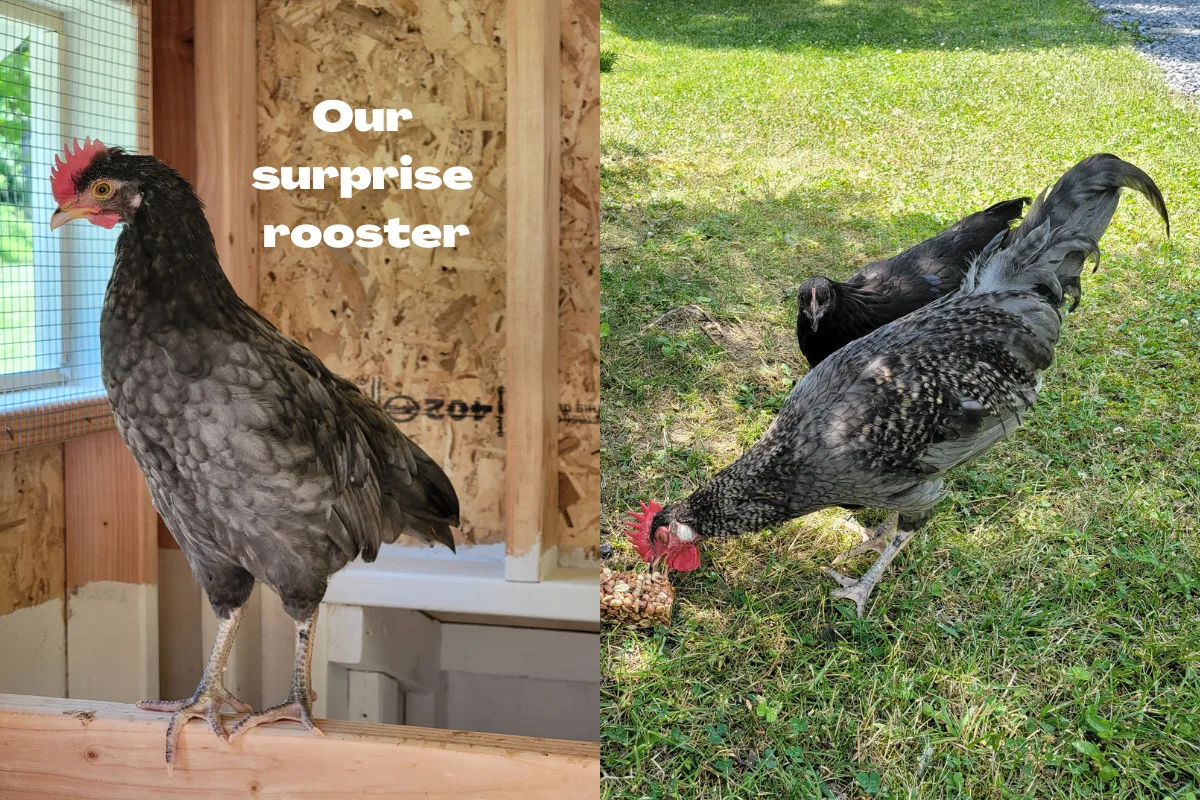
If you look at the vent (where the egg, urine and all that chicken poop comes out of), you will notice it is also larger and darker in color.
3. What Does Your Chicken Look Like?
First, look at their feathering. When your pullet is ready to start laying, all signs of the awkward teenage chickens will be gone. You’ll have a bird with glossy adult feathers, a full-grown comb and wattle.
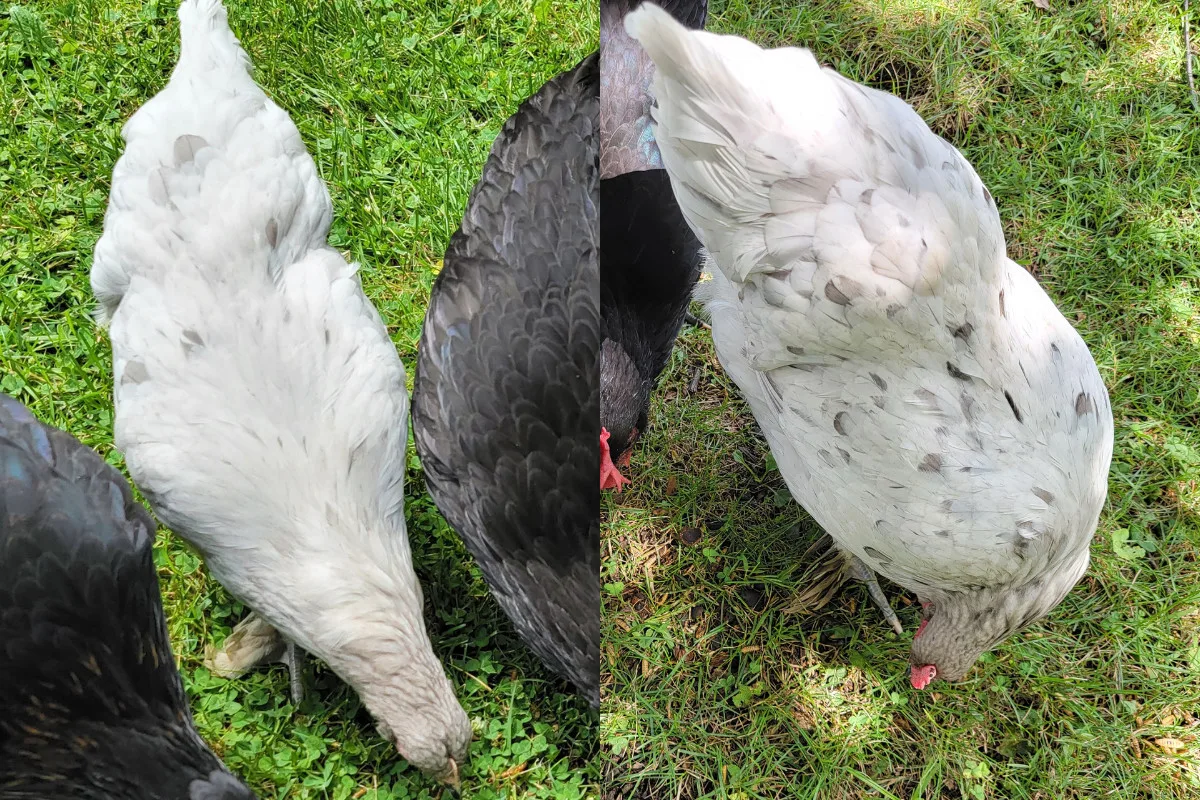
Do you know that saying about moms fussing like a mother hen? There’s a reason for it. Hens are great moms, and they even look the part. When a chicken reaches sexual maturity, they fill out. Their chests become wider and softer, and their bodies become deeper. If you pick up your chicken and feel its breastbone, the bone in the middle will be quite long. The breast area will feel softer too and less boney in general – matronly. This is due to added fat in that area. (All the better to warm eggs under.)
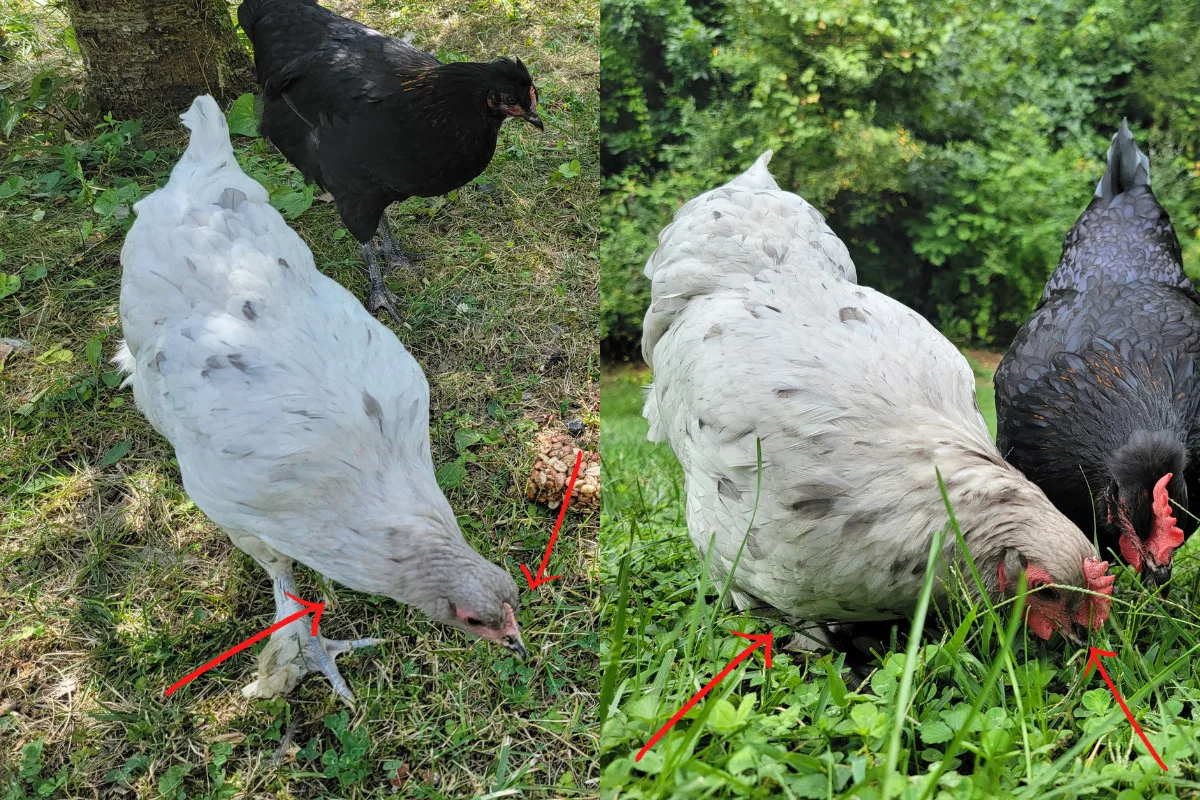
Another easy way to do this is to look at a recent picture of your bird compared with one from a couple of months ago. Don’t give me that look; we both know you’ve been snapping photos of them daily.
4. Is Your Chicken Squatting?
Have you noticed your chicken squatting submissively – legs spread slightly, butt sticking up in the air with their wings slightly spread out. If you have a rooster, this behavior is easier to spot, as the girls will usually squat in front of him. This signifies that they are ready to mate and, ultimately, lay eggs.
If they’re sexually mature, your chickens will also do this for you. Reach your hand out slowly over their backs. A mature chicken will usually squat down, assuming this submissive display.
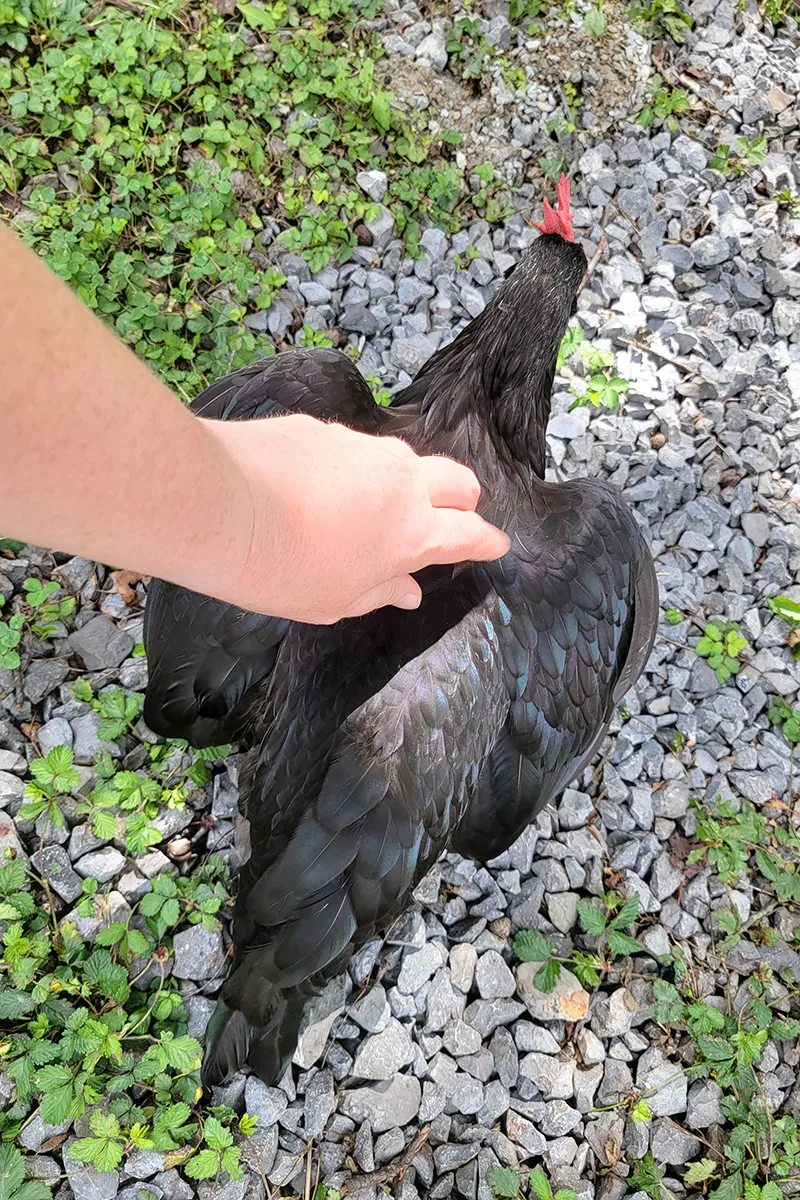
If you have birds that are a bit flighty, this may be harder to do, as they’ll be more likely to run at the sight of your hand coming toward them. Many of their natural predators come from above, so chickens are naturally wary of anything coming down above them in a threatening way. Don’t forget to add in some lovely back scratches as a reward.
If your chickens are squatting, it’s only a matter of time before you find eggs in the nest box.
5. Separated Pelvic Bones
Speaking of squatting, while your chicken is “assuming the position,” gently pick her up and hold her across your body with one arm so you can reach her bottom. Very gently, run your fingers over her backside. You should feel three noticeable, pointy bones. If the bones are right next to each other, it’s still too soon. However, if the bones have about a finger-width space between each, it’s only a matter of time.
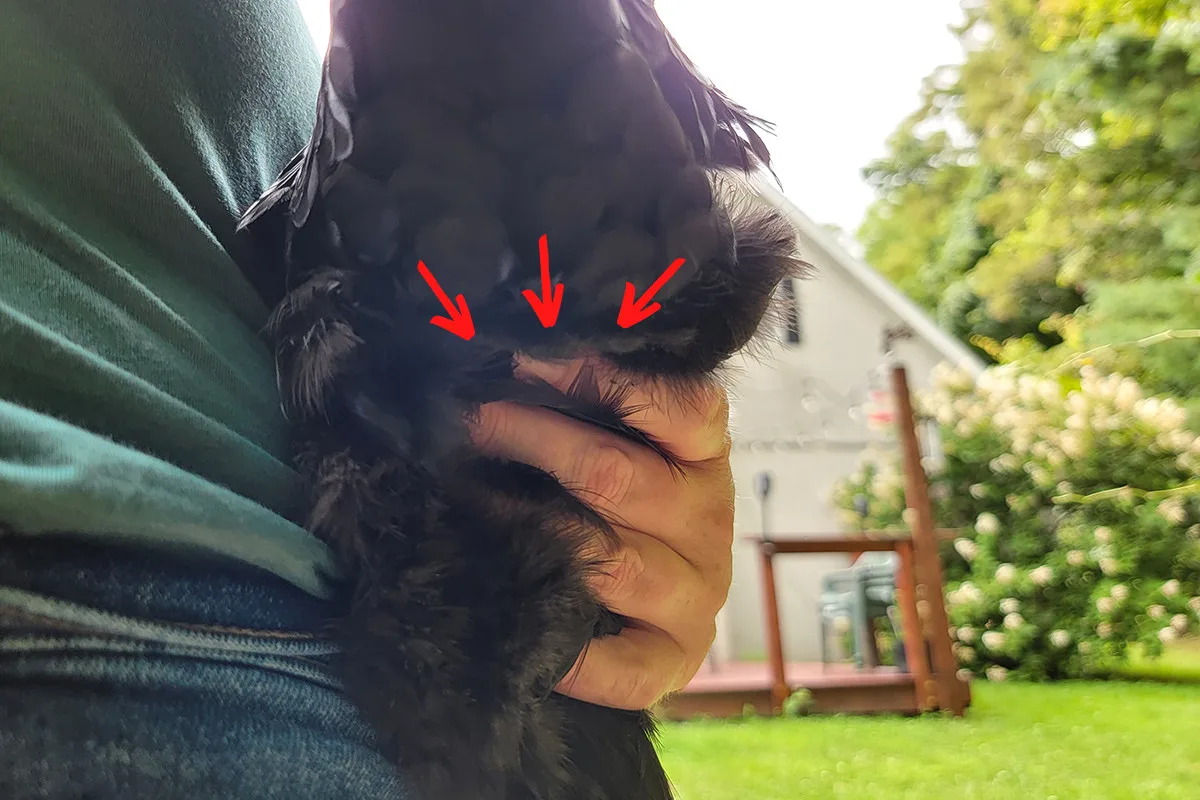
This is the chicken’s pelvic bone, which slowly separates as the pullet matures to allow the passage of eggs.
Incidentally, the girl I photographed here is our olive-egger, Tig. She hasn’t laid her first egg yet, despite displaying all six signs. Lo and behold, I felt an egg while I was feeling for her pelvic bones. Any day now!
Yes, you can feel a developing egg inside a chicken. However, it’s important to palpate gently. Squeezing or poking hard could break the egg inside the chicken. This can cause infection, and the hen could die.
6. Circular Prints in the Nest Box
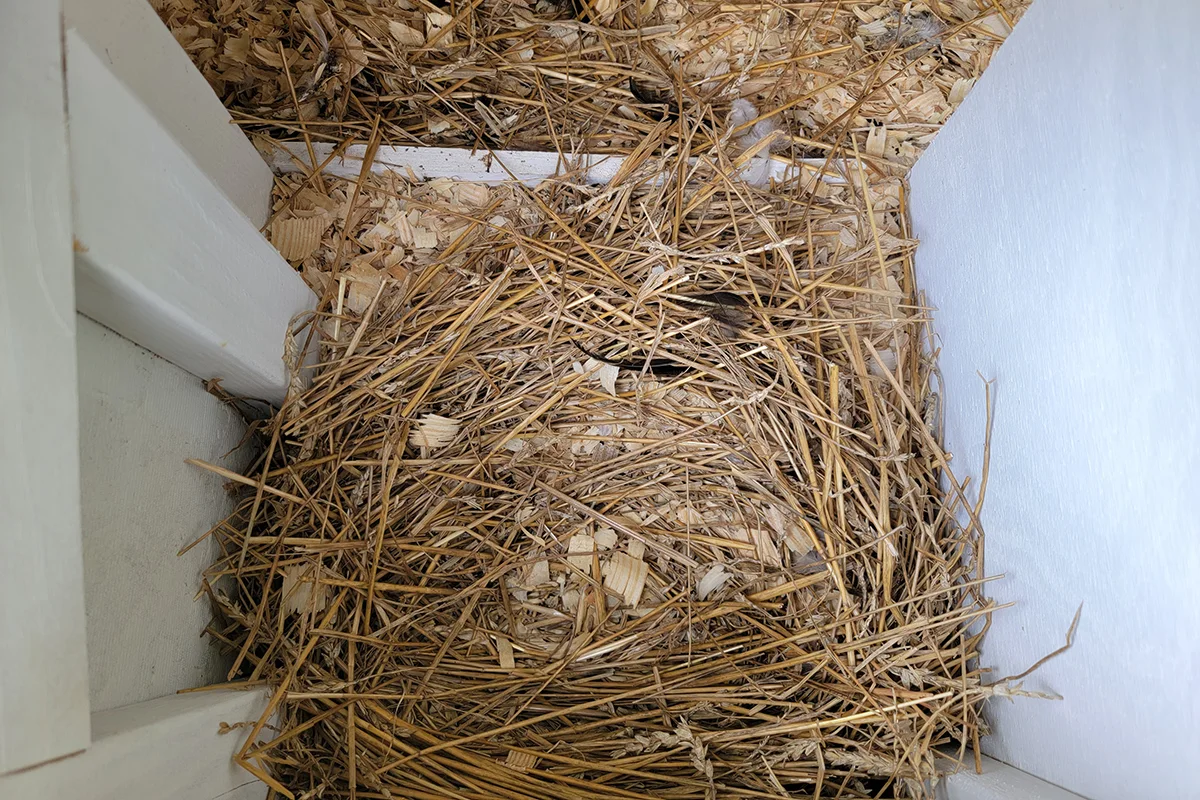
Occasionally check inside the nest box. If you begin to find circular prints in the straw or bedding, you’ll know someone has been in there making up their nest. Usually, when you see this sign, you’re only days away from your first egg.
You might even see your girls sitting in the nest box, tucking bits of bedding and straw about them. Try not to disturb them. The nesting box should be a small, dark and quiet space that helps your hens feel protected and safe from predators.
You can purchase fake ceramic eggs to tuck inside your nest boxes. Seeing that an egg is there already and no predator has taken it lets your chickens know it’s a safe spot to lay their eggs and will encourage them to hang out there.
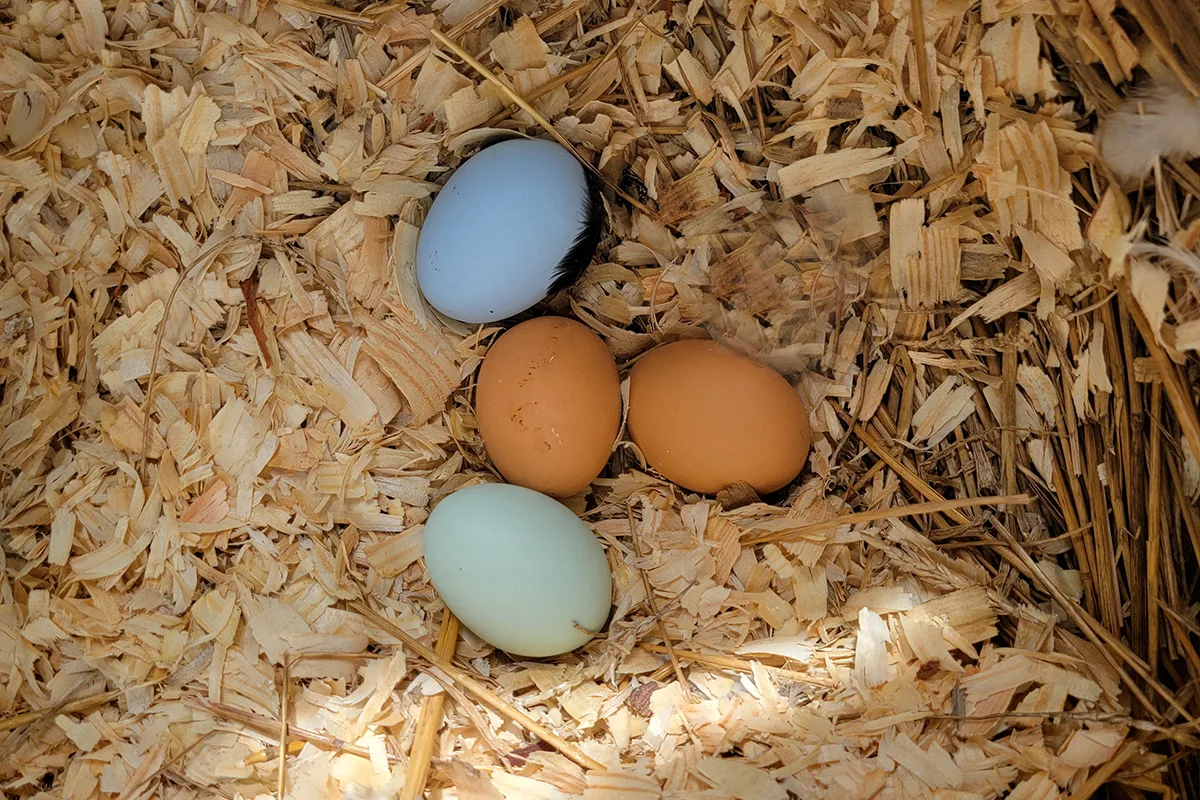
If you’ve been thinking about that first egg since you picked out those fuzzy little peeps, the last few weeks seem to take forever. But have patience, and keep watching your girls for signs. Before you know it, you’ll peek in your nest box one day and find something that wasn’t there before.
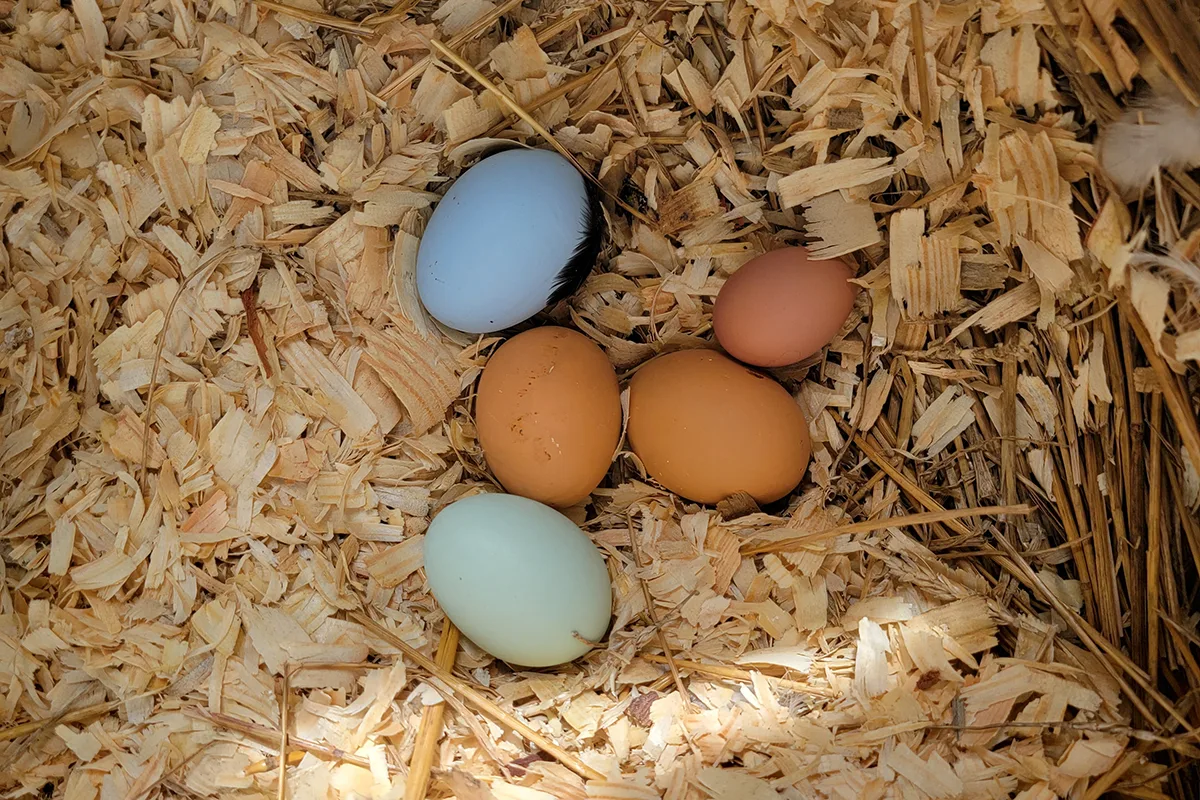
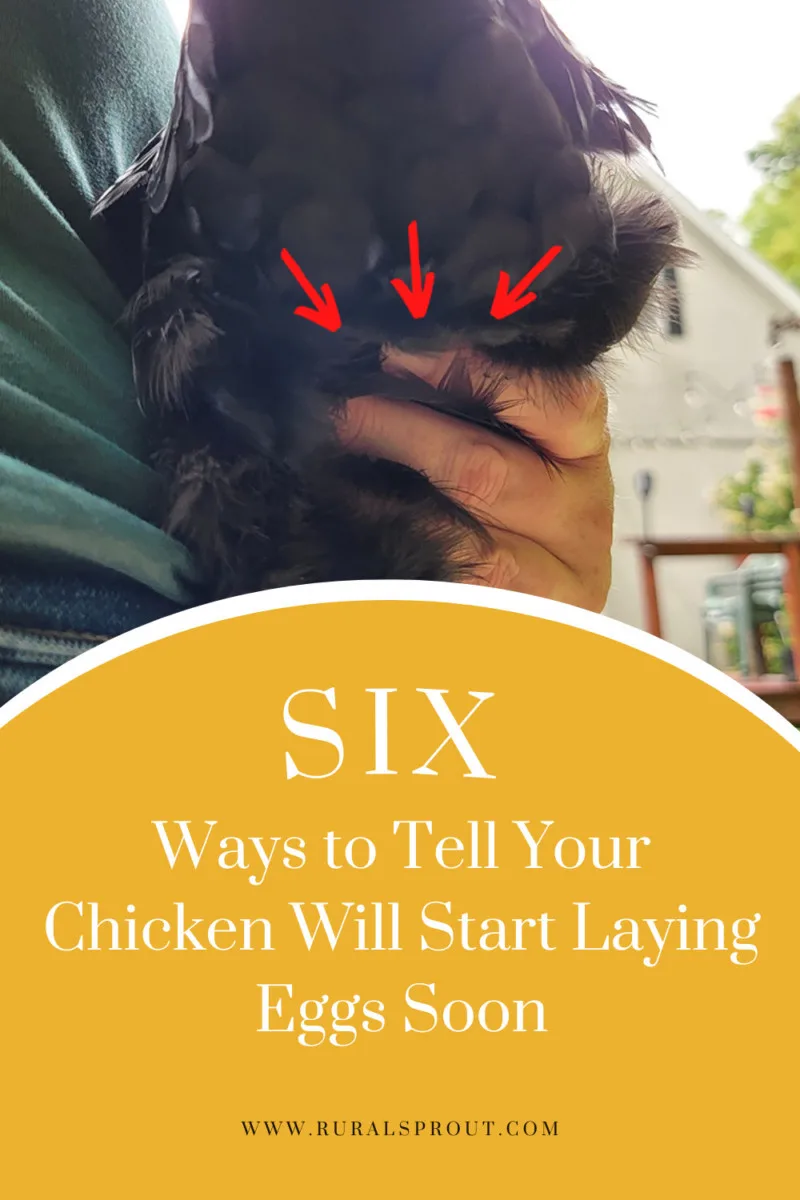

Get the famous Rural Sprout newsletter delivered to your inbox.
Including Sunday ramblings from our editor, Tracey, as well as “What’s Up Wednesday” our roundup of what’s in season and new article updates and alerts.

